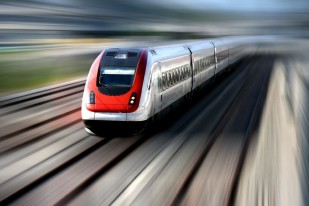 “High-speed rail is well on its way, and it is not turning back,” Transportation Secretary Ray LaHood told a train-happy crowd at this week’s Transportation Research Board Annual Meeting (#TRBAM for all you plannerds who want to follow along on Twitter).
“High-speed rail is well on its way, and it is not turning back,” Transportation Secretary Ray LaHood told a train-happy crowd at this week’s Transportation Research Board Annual Meeting (#TRBAM for all you plannerds who want to follow along on Twitter).
LaHood is right, and not just because of hefty federal funding earmarked for building infrastructure and boosting speeds.
Today, Amtrak announced it is teaming up with the California High-Speed Rail Authority to find trains that would run at up to 220 mph along both the West Coast and East Coast corridors. By combining their buying power, they could both save serious resources as they look to purchase about 60 trains over the next 10 years — and the partnership could make California’s high-speed rail look a little less pie-in-the-sky. From the Associated Press:
The high-speed rail efforts in California have come under increased scrutiny by members of Congress who say it has become too expensive to build and operate. The more ties it has with Amtrak, the better its future prospects might be, but officials said the announcement was not designed to bolster high-speed rail in California.
“It doesn’t make any sense whatsoever to go out and have a different set of standards for California or any other high-speed train,” said Amtrak President and CEO Joe Boardman. “So, no, it’s about doing the right thing for the United States.”
[Jeff Morales, CEO of the California High-Speed Rail Authority,] said the high-speed line that would serve California has much in common with Amtrak’s Northeast Corridor in terms of population, traffic congestion and economic output.
“If the case is there for investing in the Northeast, that same case can be made for the West Coast and California. We think there’s very good reason to look at them as a pair,” Morales said.
New trains could cost $35 million to $55 million each, according to Amtrak, and the feds aren’t feeding California any more rail cash. Meanwhile, on the East Coast, Amtrak needs upwards of $150 billion and 30 years to upgrade 457 miles of non-speedy track. Private investment won’t meet that initial need, says Amtrak, so it’s seeking taxpayer funding.
“International experience and our own initial investigations make it clear that the initial stages of these programs must be funded predominantly with public money,” Boardman said in testimony before the House Committee on Transportation and Infrastructure.
High-speed rail may not be turning back, but it’s certainly turning very expensive.



